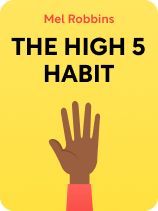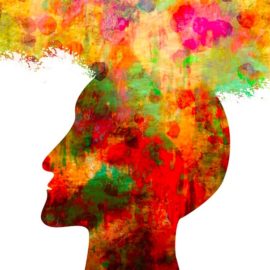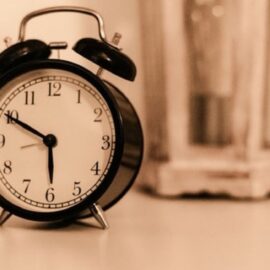

This article is an excerpt from the Shortform book guide to "The High 5 Habit" by Mel Robbins. Shortform has the world's best summaries and analyses of books you should be reading.
Like this article? Sign up for a free trial here.
Why should you high-five yourself? Why do kids feel more confident when they receive high fives from other people?
A high five might seem like a simple gesture, but it’s incredibly powerful. For instance, when kids receive a high five, they feel like they’re being praised for something they’ve done. Likewise, adults can feel the same way if they give their reflection a high five.
Here’s why giving yourself a high five has more of an impact than you think.
The Power of a High Five
There are a number of ways to refocus your attention on your strengths instead of your weaknesses, but The High 5 Habit by Mel Robbins advocates for the power of the high five. Research suggests that high fives are a particularly effective tool to increase confidence and build trust. She references one study exploring the best way to motivate school-age kids. Kids who received a high five (as compared to praise for their skill or work ethic) felt higher levels of self-esteem and showed greater perseverance. Robbins argues this is because a high five, unlike many other forms of praise, celebrates the person, not their ability or even their effort. So when you high-five yourself, you’re communicating confidence and trust in yourself.
(Shortform note: The study Robbins cites focuses on the short-term benefits of high fives, offering no evidence to support their long-term impact. However, the fact that the high five has become a universal symbol of celebration offers some testament to its power. The origin of the gesture remains a topic of some debate. The most common theory is that the high five was invented by Glenn Burke, an outfielder for the Los Angeles Dodgers in 1977. The story goes that on October 2, 1977, Burke hit a home run in the last game of the season. As he rounded third base and headed home, he raised his hand in the air and his teammate Dusty Baker slapped it in what may have been the first “official” high five.)
Robbins suggests that by giving yourself a high five and engaging in positive self-affirmation, you can create a positive association with your reflection in the mirror. This act helps to establish new neural pathways in your brain, forming connections between neurons that enhance the flow of information. These reinforced neural connections can contribute to a more positive mindset and self-perception, supporting personal growth and a greater sense of self-confidence.
| The Power of Neuro-Associations In Awaken the Giant Within, Tony Robbins explains that every time you experience a positive or negative emotion, your brain creates a link, or neuro-association, between the emotion and the experience. For example, when you look in the mirror, you might have negative neuro-associations with your reflection because of a lifetime of judging your appearance or personal achievements. Like Mel Robbins, Tony Robbins argues that the key to transforming your life is weakening negative neuro-associations and replacing them with new, empowering ones. He suggests a more involved strategy which he calls Neuro-Associative Conditioning (NAC), a six-step process through which you condition your nervous system to develop neuro-associations that support the changes you want to make in your life. The process involves 1) defining your outcome, 2) establishing leverage, 3) interrupting limiting patterns, 4) creating new empowering patterns, 5) conditioning those patterns, and 6) continuously testing and evaluating the results. Note: A 2001 report found that while NAC does draw on established behavioral science techniques, it may not be as effective as Robbins claims, concluding that more scientific research is necessary to support or disprove the effectiveness of the methodology. |
Citing the research of neurobiologist Lawrence Katz, Robbins explains how high-fiving yourself is an example of a neurobic exercise, an exercise specifically designed to challenge and stimulate different parts of your brain. These exercises often involve performing activities in new and unconventional ways. Robbins argues that giving yourself a high five in the mirror is an unexpected action that puts your brain on high alert. Then, because of the positive associations of high fives built up over years, your brain starts connecting those positive feelings with the image of yourself in the mirror, triggering a shift in perspective that allows you to think about yourself in a new, and more positive, light.
(Shortform note: According to Katz, to qualify as a neurobic exercise, an activity must engage one or more of your senses in a new way and disrupt a routine activity. He clarifies that not every new activity provides the nerve cell stimulation necessary to form new neural pathways. For example, writing with a pencil instead of a pen would not qualify as a neurobic exercise. In his book, Keep Your Brain Alive, he offers 83 examples of neurobic exercises that work, including getting dressed with your eyes closed or brushing your teeth with your non-dominant hand. It is unclear whether Katz would consider high-fiving yourself in the mirror a neurobic exercise.)

———End of Preview———
Like what you just read? Read the rest of the world's best book summary and analysis of Mel Robbins's "The High 5 Habit" at Shortform.
Here's what you'll find in our full The High 5 Habit summary:
- Why you should start each day by giving your reflection a high five
- How to silence self-doubt and adopt an attitude of confidence and self-love
- The psychology behind why high fives make you feel good






